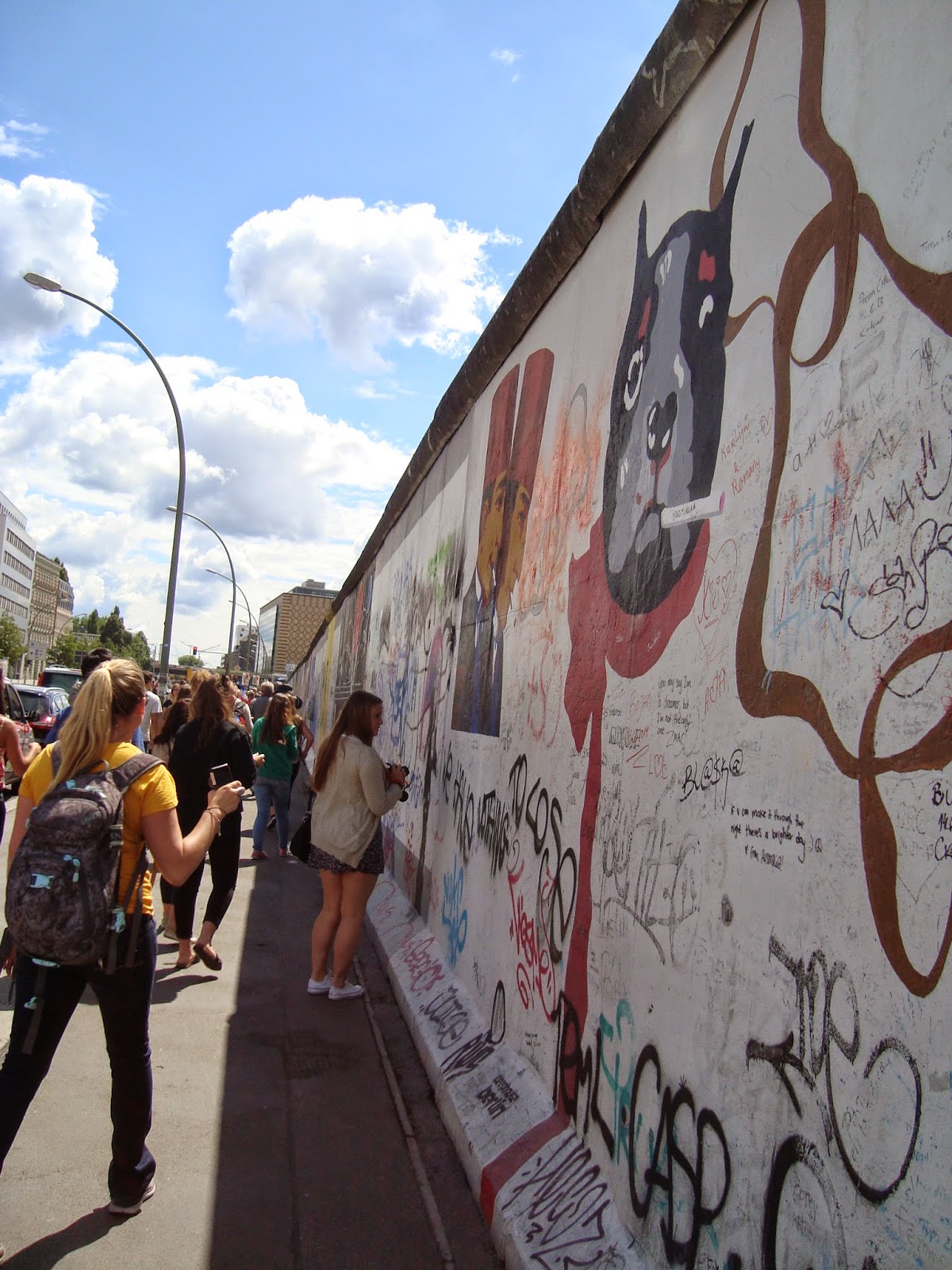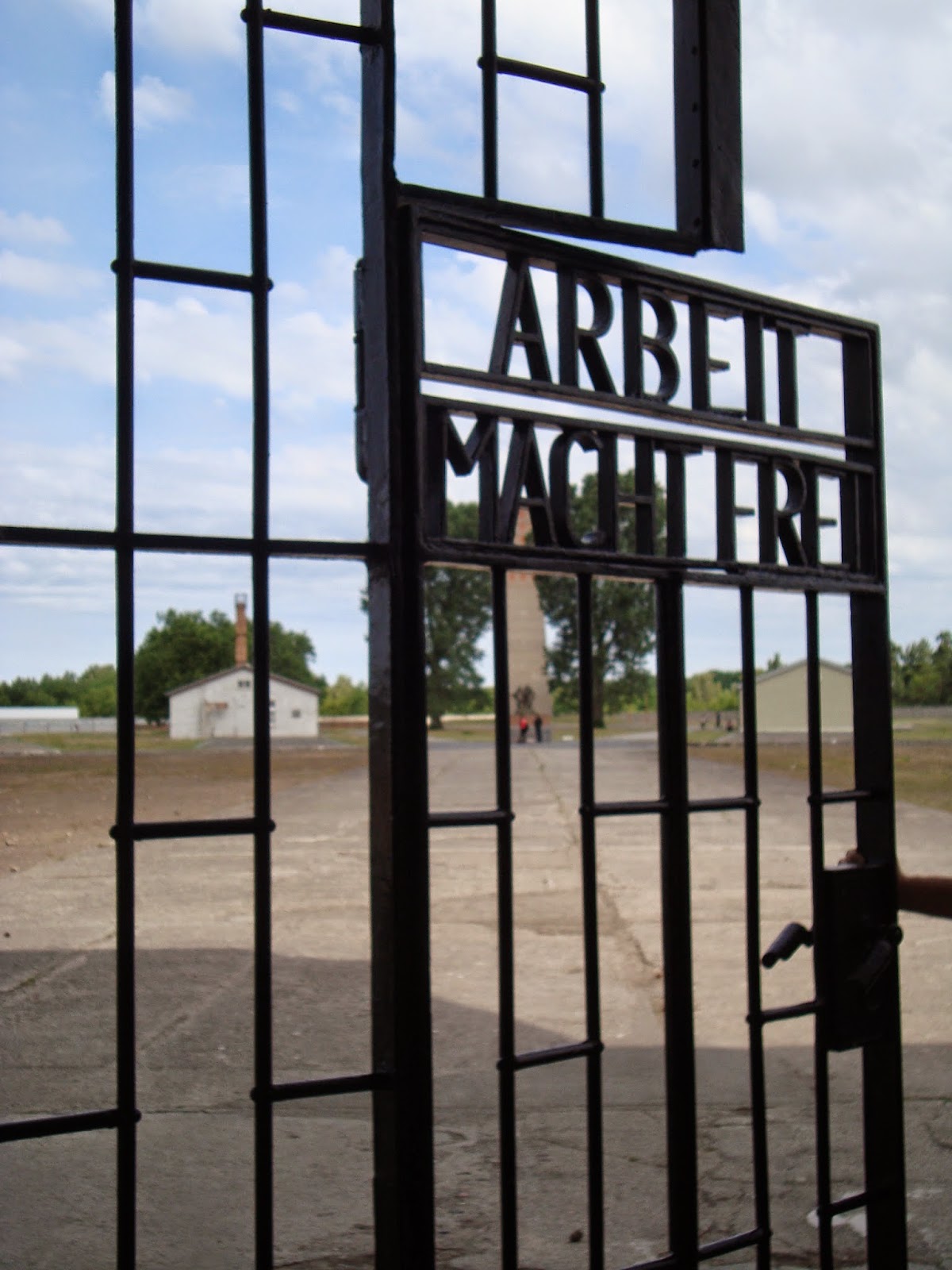Euro Tour day 1-- Nothing particularly exciting happened. Alex, Grace and I had to wake up at 6 am. to drive us to the Barcelona airport. There we met up with some of the other exchange students from Zaragoza to Valencia. Together we crammed onto a zero legroom airplane and endured a 2 and a half hour plane ride to Berlin. Since the Barcelona flight came in before the Madrid flight (where the rest of our party was flying from), we were escorted to our hotel and took the hours before dinner to explore the pool. At dinner, we went through the rules of the trip and met Raphael, our head chaperone, who made the information about the trip easy to swallow by slipping in several jokes.
Day 2--Berlin, Germany
The first thing I noticed about Berlin was that it was green. Not only was I surprised because I had forgotten what such a brilliant green looked like from being in water deprived Spain, but because there were so much vegetation in the middle of Germany's capital city.
Back to the subject of the tour, our guide was a man from New Zealand who lived in Berlin named Mike. He was incredibly energized and made the centuries of German history he was explaining to us far more interesting than any class I had ever taken. In the morning, we all toured the city by bus, stopping for certain sites along the way.
After several pictures of what remains of the Berlin Wall, we stopped at Checkpoint Charlie for lunch. Then we conquered the rest of the city by foot, Mike explaining the significance behind every aspect of every monument along the way. It impressed me how much thought goes into the memorials in Germany. Nothing is just a random sculpture or mural.
Olympic Stadium
West side of the Berlin Wall (Below)
East side of the Berlin Wall (Below)
Though this long section of the wall stands as a monument, it also serves the purpose of advertisement for artists. However, this doesn't stop everyone else from adding their own doodles to the mix.
Checkpoint Charlie
An example of how no mural is accidental in Berlin. The above picture is a painting that was created before World War II that was made to picture the perfect society under the Nazi party. It has been preserved as a reminder of the fate that same society pictured did face.
This memorial is possibly the most interesting that I have ever visited. For those who can't read the lettering below it says 'Memorial to the Murdered Jews of Europe'.
Day 3--Concentration Camp, Germany
The thing I like most about Germans is instead of trying to cover up their history they acknowledge every part of it. They use the past and create meaningful monuments of it in order to educate the future.
Here's a bit of interesting information for everyone. The houses around the camp that used to belong to the SS guards running everything are now residential homes.Imagine having an old concentration camp memorial in your backyard.
Day 4--Amsterdam! Personally, it was my favorite city on the trip. It's four kilometers below sea level, which accounts for the canals and flatness of the landscape. This made for a wonderful set up to begin our first activity for the day, a bicycle tour through the city. Despite the nearly constant cloud cover, I loved whizzing through the biker-friendly streets of Amsterdam. Never has riding a bike felt more liberating. We rode everywhere from the largest bridge to the smallest bridge; from Anne Franke's house to the Red Light District (very briefly).
After an exhilarating morning, we scavenged the main square area for lunch before our tour of the Anne Franke House. Now, I read a book where the characters visit this house turned museum. In it the staircases are described as incredibly narrow and steep. This is an inaccurate description. These "staircases" would be much better visualized as glorified ladders with slats of wood as foot holds. Despite the annoyance of an inaccuracy, I greatly appreciated the opportunity to visit it. It was spectacular, but in a subdued way, and was overall powerful. To me, it continues to prove that a story can be widely accepted, understood, and related to, and that perhaps we can make a change in how we build our future.
Thankfully, we no longer had to participate in physical activity after biking and climbing all day because the next activity was our canal tour. We took many pictures nestled up in our tour boat, and relaxed in the evening breeze.
Because of the limited space, building large houses has always been expensive to build in Amsterdam. Above is the biggest house in the city.
...and below is the narrowest house in the world.
Because of the lack of barriers at the edge of canals, it is common for people to loose their bikes in the water. This is why there are 1.5 bicycles to every person in Amsterdam. Fun fact, there are also half as many cars as people.
Some people prefer to live on the water.































































No comments:
Post a Comment